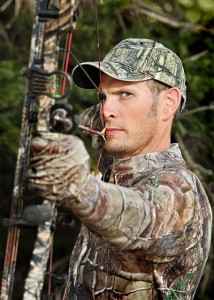Bow Accessories: Fixed vs. Moving Parts
When it comes to modern bow accessories, your options are unlimited. Some parts move–like slider sights and drop-away rests–and some are fixed–like stabilizers and quivers. Today we’re going look at the potential drawbacks of having moving parts on your bow setup.
I’ve tried a myriad of accessories in my time, but last season really forced me to reconsider some of my choices. Here’s what happened:
In 2017 I got a brand new, high-performance speed bow to replace my old single cam bow. This new “speed” bow shot field points wonderfully. Then, about a week before the hunt, I screwed on my time-proven broadheads and they flew all over the place! After many fruitless hours of trying to re-tune the bow, I gave up and switched to mechanicals. And all was well…until…
Half-way through my deer hunt–and 300 miles from home–I was taking some practice shots at camp when my slider sight stripped out and no longer functioned. Try as I might, I couldn’t fix it. Fortunately I had an old multi-pin sight on my backup bow. I bolted it on and all was fine.
But this got me thinking…
Since its invention in 1969, the compound bow–and every accessory that can be attached to it–has been reinvented or re-engineered over and over again. The old “stick-and-string” has become an extremely complicated instrument of death…which is good…but maybe too good. Why? Because the more complicated something is, the more can go wrong.
Bow Accessories to Consider
In this article I’m going concentrate on the four major moving parts of your bow setup that you may want to reconsider before heading into the backcountry:
- The Arrow Rest: There was a time when the arrow rest was just a shelf cut into the bow. Before that, it was your knuckle. Now it’s up-and-down-swinging tuning fork contraption tied to a buss cable. Almost every bowhunter I know uses one. But not me; I use a Whisker Biscuit. The Whisker Biscuit is a shoot-through containment rest (aka capture rest). It bolts into position and holds your arrow securely in place. Unlike popular drop-away rests, the Biscuit has no moving parts. The arrow simply shoots right through it. The only drawback is an infinitesimal reduction of arrow speed caused by friction between the arrow vanes and the whiskers. I use the Whisker Biscuit because it’s reliable and simple. It’s also inexpensive; about half the cost of a decent drop-away rest.
- The Bow Sight: You have two options: Fixed pins or movable pins (aka slider sights). I used a fixed pins for twenty years, and then one day I fell in love with the slider sight. The slider sight was simple: one movable pin that doesn’t block your target. You just dial up the yardage and shoot. Then one day my slider broke right in the middle of my hunt! Now I’m back to fixed pins. I sure like the idea of a slider sight–and may go back to it someday–but for now I’m sticking with the multi-pin.
- Bow Cams: Almost every modern bow is powered by either single cams or dual cams. Cams are the power engine of your bow, so this is a major consideration when choosing a bow. Basically, single cam bows are more simple and easier to tune than dual cams. The major drawback to single cams is they produce a slower arrow speed. Dual cam bows (aka speed bows) are faster, but harder to tune because, a) both cams must roll over in perfect synchronization, and b) the extreme velocity of the arrow accentuates slight imperfections in bow tuning, broadhead design, and shooting form. These days bow manufacturers claim to have conquered tuning issues by tethering the dual cams, but in my experience dual cam bows are still more difficult to tune. I’m sure it has a lot more to with blistering arrow speed than tuning, but just remember, accuracy suffers when adding extra speed. This leads us to broadhead selection.
- Broadheads: Almost all broadheads fall into two categories: Fixed blade or mechanical (aka expandable). Simply put, mechanical blades fold into the tip during flight, and then expand on impact. Because the blades are hidden, they are less affected by wind resistance and planing. Thus, mechanicals are more accurate than fixed broadheads, especially on speed bows. The major drawback of mechanicals are twofold: a) more moving parts make them susceptible to breakage on impact, and b) less penetrating power due to energy loss during blade deployment.

Mechanical vs. Fixed broadheads Fixed blades are inherently stronger and have better penetration than mechanicals. However, they can be difficult to tune with modern speed bows. The most important factor in choosing a broadhead is how well it shoots through your bow. Personally, I prefer fixed blades with my single cam bow and mechanicals with my dual cam bow. FYI, the most accurate fixed-blade broadhead I’ve ever used is the Trophy Taker Shuttle T, and my favorite mechanical is the Rocky Mountain Warhead. Note: the Warhead is extremely reliable and inexpensive (only $19.99 per 3 on Amazon).
Conclusion
Compound bows are much more complicated than they used to be, which is good and bad. Bow manufacturers tout speed as their primary selling point, but faster bows aren’t necessarily more accurate. The same concept applies to arrow rests, bow sights, and other accessories. Newer isn’t always better.
When it comes to equipment selection, I recommend keeping it simple. And when it comes to moving parts, less is more.
Consistent success afield comes from skill and woodscraft, not gear. As always, I recommend focusing more time and energy on the process and less on equipment.
Good luck!


